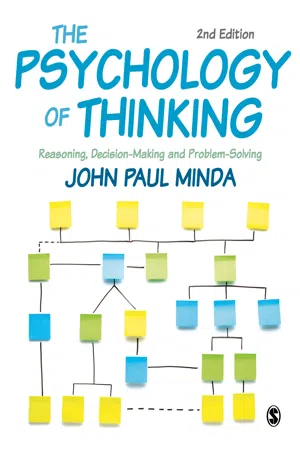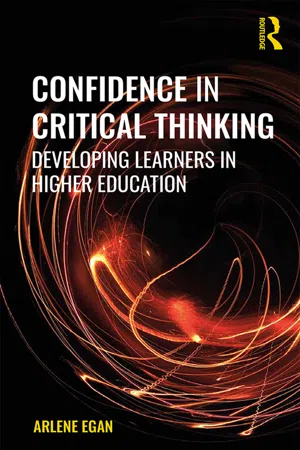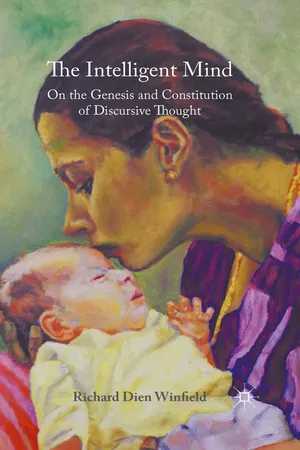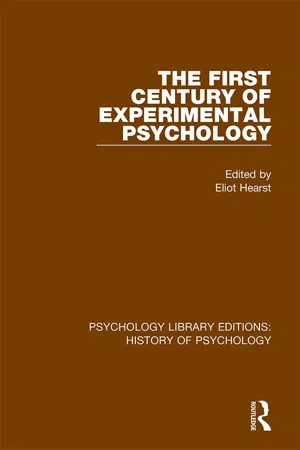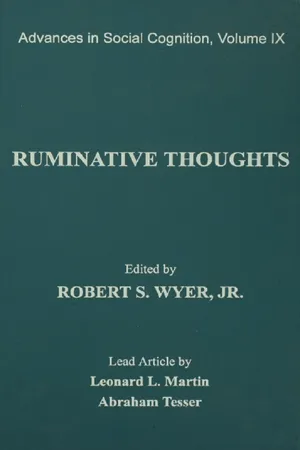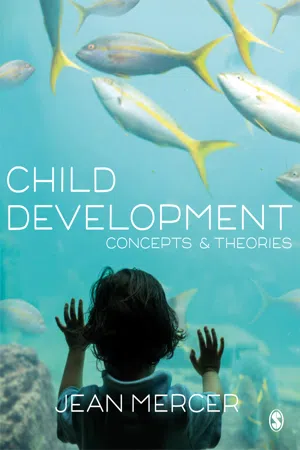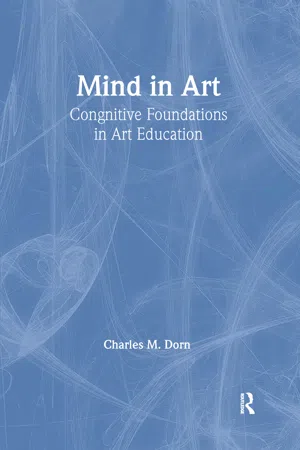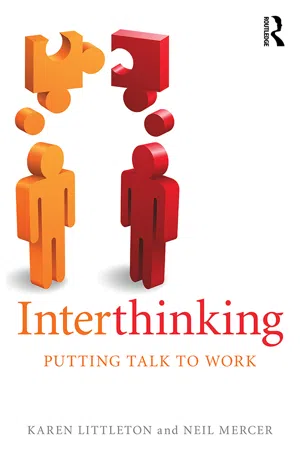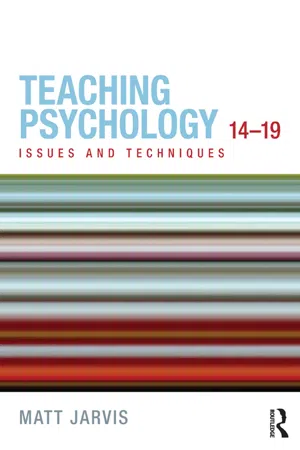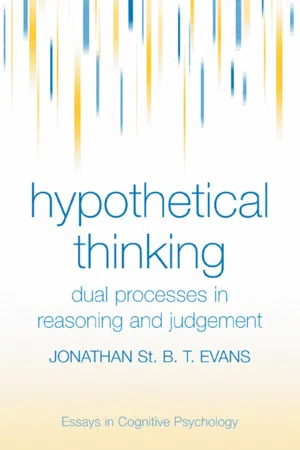Psychology
Concepts of Thinking
The concepts of thinking in psychology encompass various mental processes involved in cognition, problem-solving, decision-making, and creativity. These concepts include perception, attention, memory, language, reasoning, and problem-solving. Understanding these concepts helps psychologists study and explain how individuals process information, make decisions, and solve problems in different situations.
Written by Perlego with AI-assistance
Related key terms
Related key terms
1 of 4
Related key terms
1 of 3
11 Key excerpts on "Concepts of Thinking"
- eBook - ePub
The Psychology of Thinking
Reasoning, Decision-Making and Problem-Solving
- John Paul Minda(Author)
- 2020(Publication Date)
- SAGE Publications Ltd(Publisher)
1 The Psychology of Thinking Thinking is so central to the human experience that it has been described as the essence of being. We are all familiar with the phrase, “Je pense donc je suis” or “I think therefore I am”. This comes, of course, from Descartes’ Discourse on Method (1637) and underscores what is so crucial and compelling about the study of thinking. Humans, like other animals, behave, learn, respond, communicate, and remember. But humans also think. We can discover something new by thinking about it. We can solve problems in the mind, visualize solutions, and arrive at an important decision by thinking. We can be aware of our own thoughts and aware of the consequences of our actions and behaviours. This book is about the psychology of thinking. That might sound redundant, given that psychology is often defined as the study of the mind or of mental activity. In other words, if psychology is not about thinking, what else can it be about? Psychology is a very broad field, encompassing everything from the study of neurotransmitters and basic neuroanatomy to the study of learning and memory to the understanding of mental health and the study of group behaviour. This book is concerned with the study and understanding of the thought process. Thinking is usually studied within the broader field of cognition. Cognitive psychology has traditionally been defined as the study of information processing and behaviour. This encompasses everything from basic attention and perception to memory, concepts, and thinking. As a topic within the study of cognitive psychology, the psychology of thinking is concerned with complex mental behaviours, such as problem-solving, reasoning, decision-making, and becoming an expert. A good understanding of basic cognition is very useful in understanding the psychology of thinking, but it is not necessary - eBook - ePub
Confidence in Critical Thinking
Developing Learners in Higher Education
- Arlene Egan(Author)
- 2019(Publication Date)
- Routledge(Publisher)
This definition explains that critical thinking is not about being negative or that there is only one way to think. Instead, it suggests an approach to thinking that will differ depending on what is to be achieved, tapping into a range of skills necessary to carry out the task at hand.Halpern’s (2003) definition comes from a psychological perspective and is useful for deepening awareness of how critical thinking relates to learning and performance in higher education. The idea that we use a range of strategies and skills appropriate to the situation and the desired outcome highlights the importance of understanding what these skills are, as well as our perceived strengths and limitations relating to these skills. This definition also helps us to conceptualise critical thinking as being less about banging our fists on the table in an argument and more about engaging in smart, thoughtful consideration. It suggests an approach to thinking about different situations that is practical and outcome oriented.For the purpose of this book, the definition provided by Halpern (2003), presented above, will be used. This definition is from a particular tradition in psychology known as ‘cognitive psychology’, which is ‘concerned with mental processes (such as perception, thinking, learning, and memory)…’ (Merriam-Webster Dictionary.com ). Through these definitions the connection between cognitive psychology and this perspective of critical thinking becomes evident as both are concerned with outcomes and thought processes. There are other perspectives which can be used to understand critical thinking, and as you research and read up on this area you will notice many insights from philosophy and critical pedagogues (see ten Dam & Volman, 2004). There are merits and challenges to each perspective, which you can discover in your own time.Given its focus on mental process and thinking, other work conducted in cognitive psychology by Kahneman and Egan (2011) suggests that, when we are thinking, we use a dual processing system. In essence this means that our thoughts result in two ways; unconsciously (quick thinking based on experience or intuition) and consciously (explicit engagement with the thought). These are labelled ‘System 1ʹ or ‘System 2ʹ thinking. When we use System 1 thinking, our thinking is fast and automatic, we are not paying much attention to it and rely more on strategies such as gut feelings. System 2 thinking is much more deliberate, analytical and takes more effort (Stupple et al., 2017). Critical thinking is aligned to System 2 thinking, where we experience more deliberate, conscious application of thought which takes effort and energy. - eBook - ePub
The Intelligent Mind
On the Genesis and Constitution of Discursive Thought
- Richard Dien Winfield(Author)
- 2015(Publication Date)
- Palgrave Macmillan(Publisher)
2 Whatever those thoughts may be, they cannot be formed and apprehended without being verbalized in either inner or overt speech. The meaning of thought may be completely imageless, but that meaning cannot be verbalized unless imagination keeps in mind the configuration of the words that express thinking. Consequently, thinking always involves imagination to supply at least the signs of the words with which thoughts are formulated. Moreover, the thoughts that thinking conceives may not be pure, deriving their entire content from logical determination. Thought can equally conceive concepts, judgments, and inferences that are empirical, deriving their content from general representations supplied by imagination and intuition. In the latter case, thinking will conceive thoughts whose content is dependent upon and in relation to external sources. The thoughts so conceived do not lose their form as thoughts, but their content is alien to that form. The psychology of thinking therefore involves distinct types of thought characterized by different relations between the form and content of thinking. Each of these types of thought involves the logical determinations of concept, judgment, and syllogism, but each realizes these logical determinations in particular psychological activities distinguished by the psychological factors they employ. In all cases, language is necessarily at work, without having to undergo any grammatical or lexical modification. Consequently, the different stages in the psychology of thinking are not stages in linguistic development. Although thought always involves language, the development of thinking proper is distinct from the phylogenetic genesis of language, the historical modifications of language, and the ontogenetic maturation of discursive individuals.The different relations between the form and content of thinking represent different stages in the autonomy of thought. Whenever thinking has a content different from thought, it occupies itself with something extraneous, something given independently of its own activity. In that case, thinking has a formal character, reflecting how its activity does not generate the content of what it thinks. Instead, it draws that content from some other source. The formality of a thinking whose form and content fall apart thus involves heteronomy, in that thinking takes on a content it finds given instead of thinking something immanent to thought itself. The more thinking determines the content of what is thought, the more heteronomy is overcome, and the more conceptual autonomy is achieved. - eBook - ePub
- Elliot Hearst, Eliot Hearst(Authors)
- 2019(Publication Date)
- Routledge(Publisher)
Of course Harvard was not alone in the cultivation of this field. By integrating the belief that thought could be viewed as a higher level skill (Bartlett, 1958) with the quantitative metrics of the mathematical theory of information (Shannon & Weaver, 1949), psychologists in England and the United States had already created an empirical basis for a field of cognition in studies of perception, problem solving, and language (see Neisser, 1967, for a review). The skillful use of computers (Newell, Shaw, & Simon, 1958) as a tool for the study of problem solving had led psychologists to propose cybernetic principles as a replacement for the ancient reflex arc (Miller, Galanter, & Pribram, 1960).The view of the human as an information processing system, analogous to a digital computer, has played a crucial role in the study of the higher mental processes. But its importance can only be appreciated in the light of more general changes in the definitions, goals, and methods of psychology during its first century. The original definition of psychology was the study of conscious mental events through systematic introspection by subjects into their mental processes. It was assumed by the earlies workers in the field both that psychology was uniquely relevant to humans and that consciousness could be understood in isolation from nonconscious processes. These assumptions led to particular views about the nature of thought that characterized Wundt and his immediate followers. The pervasive influence of evolutionary theory swept these assumptions aside by forcing consideration of links between humans and other animals. Psychologists influenced by the resulting “Behaviorism” suggested a delay in the study of human mental life until the fundamental structure of associations could be understood through animal experimentation. Often this behaviorist period (roughly 1910–1950) is seen as being wholly unproductive for the study of thought. Such a view is probably not completely justified. Behaviorism in the United States provided a new rigor of definition and experimentation and an acceptance of the postulation of internal psychological constructs (e.g., in the theories of Tolman, Hull, and Spence) that helped provide a climate of support for development of the new Cognitive Psychology. - eBook - ePub
Ruminative Thoughts
Advances in Social Cognition, Volume IX
- Robert S. Wyer, Jr., Robert S. Wyer, Jr.(Authors)
- 2013(Publication Date)
- Psychology Press(Publisher)
5 Some Thoughts about Thinking Carol L. Gohm Linda M. Isbell Robert S. Wyer, Jr. University of Illinois, Urbana-ChampaignUntil recently, the dynamics of everyday thought was a neglected area of social cognition research. However, our awareness of the need to understand information processing in natural settings has stimulated an emergence of concern with this topic by both cognitive and social psychologists. Research stimulated by this concern has taken many directions, including a consideration of the thoughts that are spontaneously elicited by a persuasive message (McGuire & McGuire, 1991; Petty & Cacioppo, 1986), the role of personal stories and narratives in comprehension and communication (Schank & Abelson, 1995), the effects of unintended thoughts on cognitive and social behavior (Uleman & Bargh, 1989), the persistence of thoughts that one consciously attempts to suppress (Wegner, Schneider, Carter, & White, 1987), and the interactive effects of cognition and emotion on task performance (Clore, Schwarz, & Conway, 1994; Dweck & Leggett, 1988).There is nevertheless a need to develop a theoretical formulation of the thought processes that surround daily life activities and that can conceptually integrate the implications of this diverse body of research. Such a formulation could provide an understanding of the types of thinking that mediate individuals’ behavior in situations both in and out of the laboratory. For this reason, Martin and Tesser’s conceptualization is potentially very important.At the same time, conceptual ambiguities are inevitable at this early stage in the theory’s development. Without diminishing the importance of Martin and Tesser’s work, we identify some of these ambiguities and, in doing so, suggest ways in which future iterations of the formulation might fruitfully be refined and extended. Our comments focus on a general concern, namely, that the authors’ definition of rumination may be too broad to be useful in conceptualizing the types of thinking that occur both spontaneously and intentionally in the course of daily life activity. We personally prefer an approach that more explicitly recognizes the multidimensionality of thinking and the possible independence of different types of rumination that Martin and Tesser place under a single heading. Such an approach might lead more easily to a general conceptualization of thought processes that specifies the similarities and differences between thinking styles and their determinants as well as their effects. - eBook - ePub
Child Development
Concepts and Theories
- Jean A. Mercer(Author)
- 2018(Publication Date)
- SAGE Publications Ltd(Publisher)
Chapter 5 Concepts Related to the Development of Cognition and PerceptionChapter 5 is concerned with concepts that contribute to our understanding of children’s development of thinking, memory, and other cognitive processes. Theory plays an important role in the study of cognitive development, with valuable concepts having been contributed by the Swiss theorist Jean Piaget, by behaviourist thinkers, by dynamic systems theorists, and by others. Research methods specific to the study of cognitive development have been created. As these have shown, memory, thinking skills, communication, and language use all typically change developmentally from birth to age 12, following predictable developmental trajectories. Atypical cognitive development may interfere more or less severely with other aspects of children’s development.Introduction
The concept of cognition is a broad one that includes a range of mental and intellectual states and processes, including learning, memory, problem-solving, and symbol use. Cognition also includes the idea of concept use and formation that is the focus of this book. The extent of developmental change in cognition during childhood is evident when we think about the limited capacities of a 1-year-old and compare them to the much more advanced, almost adult-like, cognitive skills of a 12-year-old. Perception is a concept less frequently used in everyday thinking about child development; it may be thought of as involving processes that combine the sensory abilities discussed in Chapter 4 with cognitive advances, allowing the individual to make sense of the complex sensory world.Development story 5.1Five-year-old Oliver’s teacher, Ms McDonald, felt that he was ‘different’ soon after she met him. She noticed that he did not play much with other children at breaks, and did not even watch them as though he were interested but too shy to make friends. He seemed to be focused on his own concerns and would watch beetles or worms carefully. He did not seem unhappy and would answer briefly if asked a question. However, when frustrated Oliver would have a screaming tantrum, and Ms McDonald could usually not even understand what had frustrated him. Ms McDonald arranged a meeting with Oliver’s parents in the hope that she could find out more about him and understand what he needed before he got much older. - eBook - ePub
Mind in Art
Cognitive Foundations in Art Education
- Charles M. Dorn(Author)
- 1999(Publication Date)
- Routledge(Publisher)
This chapter examines the philosophical, aesthetic, psychological, expressive, and developmental literature in the visual arts as they illuminate the mental processes used in artistic conception. Contributions from various art perspectives are discussed as they relate to the various higher order mental processes used in art, including perception, consciousness, imagination, expression, emotion, thought, intellect, and language, especially as they influence the processes of thinking about and making art. Discussed are contributions from the fields of philosophy, aesthetics, psychology of art, and children’s artistic development as they relate to cognition and conception in both art objects and events and in the general cognitive and artistic growth of young learners.PHILOSOPHICAL DEFINITIONS OF ART
As in the cognitive sciences, the rationalist philosophers Descartes, Spinosa, and Liebnitz provided the conceptual thinking necessary for conceiving of the arts as existing in the life of the mind. Descartes supported the notion that art could exist as a mental idea, Spinosa conceived that direct perception of art was possible, and Leibnitz viewed art objects and events as existing in a particular time and place. To grasp what mental processes are involved in the arts, we first need to understand how these three frames of mind define the self and its relation to works of art. I define these frames as (a) art as idea, (b) art as form, and (c) art as language.Art as Idea
Descartes’ methods, which began with thinking, made it possible for us to (a) think of objects and events as mental concepts to be experienced and manipulated as mental schema, (b) achieve cognition through intuitive reasoning, and (c) recognize the function of personal and self-knowledge in expressive thought and action. Descartes’ separation of mental from physical life opened up the possibility that a life of the mind existed separately from the sensory system of sight, touch, sound, and smell. - eBook - ePub
- Karen Littleton, Neil Mercer(Authors)
- 2013(Publication Date)
- Routledge(Publisher)
Perhaps one of the reasons why language-based processes of creative interthinking are not well understood is that the initial and most influential psychological studies of creativity and creative processes have, like those of problem-solving and learning, been focused on the abilities and achievements of individuals. Researchers have typically tried to assess an individual’s creativity/creative potential, or to characterize the nature of the individual creative processes. This reflects the dominant conception of creative thinking as an intramental process, rather than intermental. In Western culture, at least, the capacity for ‘being creative’ is typically ascribed to individual talent and seen as involving an individual producing ‘a new mental combination that is expressed in the world’ Sawyer (2012: 7). If we are to understand the complexity and the diversity of creativity, and especially if we want to maximize opportunities for it to be achieved, then we need to widen the focus from the individual as lone creator to recognize that creative achievement normally involves the collective intellectual efforts of a group of people. Creative thinking can of course be pursued intra mentally, but it commonly only reaches fruition through inter mental activity as people ‘interthink’ in pursuit of some common interests. We have discussed many examples of this, taken from our own research and that of others, in Chapter 3. Not all research on creativity has been focused on individuals. There is a growing body of work that adopts a sociocultural approach to creativity. Researchers taking this perspective share a recognition of the intrinsically social and communicative nature of human life, and usually argue for the existence of a special, reciprocal relationship between intermental and intramental activity - eBook - ePub
Rethinking Introspection
A Pluralist Approach to the First-Person Perspective
- J. Butler(Author)
- 2013(Publication Date)
- Palgrave Macmillan(Publisher)
Before jumping into the role of concepts in introspection, however, I want to address a potential worry that could creep up here. Pointing toward concepts to explain introspection may seem somewhat vacuous, especially to those who have explored the quagmire of views concerning the nature of concepts. There are a number of very different perspectives on what concepts are, from Jerry Fodor’s claim that concepts are atomistic mental particulars, to the more common, but still controversial, view that concepts are structured and interconnected representational complexes, not to mention the view that they are non-mental abstract objects, such as Platonic forms (Fodor, 1998; Margolis & Laurence, 1999). So, without a clearer idea of what concepts are, appealing to concepts to explain introspection may not seem like a very progressive option. I do not have a definitive view of concepts to offer, so I will refrain from pressing any particular account of concepts here, with the exception of assuming that they are broadly mental in nature. Fortunately, however, we can still appeal to concepts without necessarily stating precisely what they are. Whatever they may be, concepts play central roles in human cognition and it is this functional level with which we are primarily concerned. Accordingly, we can discuss concepts in terms of what they do, rather than in terms of what they are. Of course, some views define what concepts are in terms of what they do, and this seems to me to be a fairly plausible route to take in understanding the nature of concepts, but for our purposes we can discuss concepts on this level without excluding the possibility that the nature of concepts includes more than their functional roles. Whatever they may be, concepts enable us to engage in an amazing variety of cognitive processes, and it is this enabling capacity of concepts that I will address and appeal to in what follows.With that said, let us get back to the heart of the matter. One central feature of concepts is that they allow us to engage in abstract thought, such that we can think about things beyond our immediate experience. Consider, for example, the concept of a cause. We utilize the notion of causation to understand a wide variety of things on a daily basis, from the satiation of hunger by eating food, to the pressing of a gas pedal to make an automobile move forward. Yet, as Hume famously pointed out, we never observe causes, not even within ourselves. The concept of a cause does not come from, but rather extends beyond, our immediate experience, and thereby brings us to a new level of cognitive ability. It enables us to make sense of our experiences, by discerning abstract relations and patterns among them. - eBook - ePub
Teaching Psychology 14-19
Issues and Techniques
- Matt Jarvis(Author)
- 2012(Publication Date)
- Routledge(Publisher)
2001 ) the answer is a resounding ‘no’. A good psychologist must be able to think like a scientist but also, on occasion, like an anthropologist, a historian, a philosopher and a therapist. This is a challenging idea for psychology teachers at both school and undergraduate level who (necessarily) spend considerable time inculcating in students an understanding of the scientific method. However, although we place considerable value on psychology as a science, even at introductory levels we do teach and value other ways of thinking, albeit often implicitly.Time to get more technical. One way to understand the range of thinking that we might call ‘psychological’ is with reference to the distinction between analytic and synthetic modes of thinking (Sternberg, 1997 ; McGhee 2001 ). In this context, the terms analysis and synthesis are used more broadly than in Bloom’s model. Analytic thinking is logical, based on drawing inferences from available data. Synthetic thinking, on the other hand, is free flowing and imaginative. We think analytically when we apply rules to decide the truth or falsity of an explanation, when we statistically analyse data and when we design an experiment to eliminate the influence of all independent variables bar the one we are interested in. This is very much traditional scientific thinking and many psychologists think of it as the correct way to think about psychology.Without a degree of synthetic thinking, however, sciences never make great leaps. As McGhee puts it: ‘It is the imaginative leaps carried out by Copernicus, Albert Einstein and Stephen Hawking that set them apart from their merely excellent peers’ (2001). Whenever we generate a new hypothesis to test a theory, use an analogy to make a model accessible – such as the multistore model – or apply a psychological theory or idea to understanding a new situation, we are thinking synthetically. But what does this scientific philosophy have to do with classroom teaching? The answer is that being able to appreciate both analytic and synthetic thinking allows students to think more widely when looking for the commentary and evaluation that comprise AO2 marks. This is put into practice in designing thinking skills toolkits (see p82) and is reflected in the type of sequenced learning activities that follow from Sternberg’s triarchic model of psychology teaching (p86). - eBook - ePub
Hypothetical Thinking
Dual Processes in Reasoning and Judgement
- Jonathan St. B. T. Evans(Author)
- 2007(Publication Date)
- Psychology Press(Publisher)
As an example, psychologists have accumulated much evidence that people’s evaluation of logical arguments is biased by whether or not they believe the conclusions given (Chapter 4). This is regarded as a bias because logical validity depends only on whether a conclusion follows necessarily from some assumptions and not on whether assumptions or conclusion are actually true. I suppose one could try to move directly from this result to its practical implications without any real theoretical analysis of the cause of the bias. Such an analysis might, however, conclude that human reasoning is automatically contextualized by prior knowledge and belief and that only a strong effort of deliberative conscious reasoning will overcome this. In my view, understanding of the likely practical implications of the bias is greatly assisted by this kind of theorizing.In this book, I shall be viewing the phenomena discussed within both a broad and a more specific theoretical framework to be introduced later in this chapter. The broad framework, generally known as “dual-process” theory, has been applied to a wide range of cognitive studies, including learning (Reber, 1993), reasoning (Evans & Over, 1996a; Stanovich, 1999), conceptual thinking (Sloman, 1996), decision making (Kahneman & Frederick, 2002) and social cognition (Chaiken & Trope, 1999). Dual-processing approaches assert the existence of two kinds of mental processes corresponding broadly to the idea of intuitive and deliberative thinking and to more general distinctions between implicit and explicit cognitive processes, such as those involved in learning and memory. Within this general framework, I will, however, present a more specific dual-process theory of hypothetical thinking that updates and extends my earlier heuristic–analytic theory of reasoning (Evans, 1989). In support of this theory, I will discuss phenomena that are drawn mostly (but not exclusively) from two separate but related literatures: the psychology of reasoning on the one hand; and the study of judgement and decision making on the other. Before presenting my general and specific theoretical framework, I shall outline the nature of these two fields of study, including the methods and theoretical approaches that have tended to dominate them.THE PSYCHOLOGY OF REASONING
I ought, perhaps, to start with the distinction between implicit and explicit inference (see also Johnson-Laird, 1983). Any kind of inference involves going beyond the information given and may technically be regarded as deductive or inductive. Inductive inferences add new information, whereas deductive inferences draw out only what was implicit in assumptions or premises. Both deductive and inductive inferences may be either implicit or explicit in terms of cognitive processing. I shall illustrate this with some examples.
Index pages curate the most relevant extracts from our library of academic textbooks. They’ve been created using an in-house natural language model (NLM), each adding context and meaning to key research topics.
Explore more topic indexes
Explore more topic indexes
1 of 6
Explore more topic indexes
1 of 4
